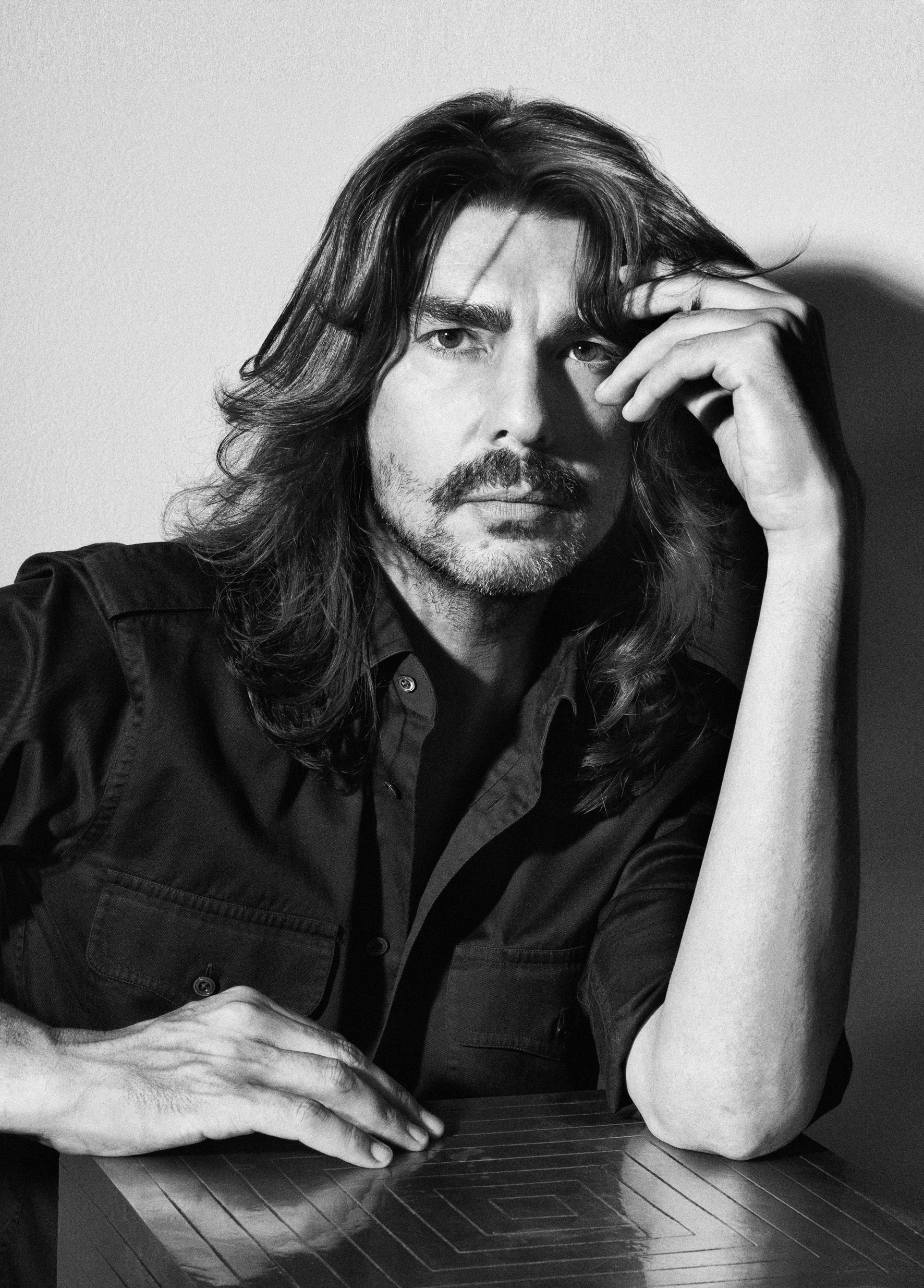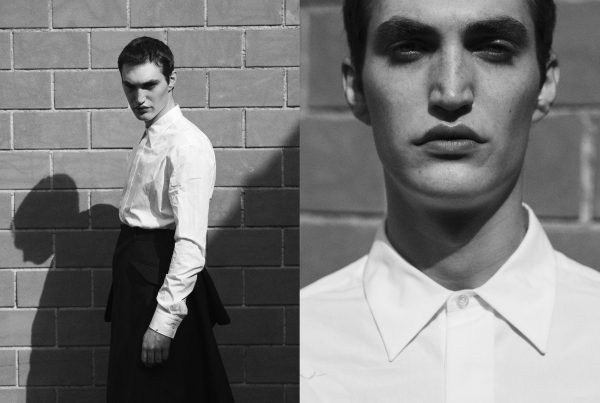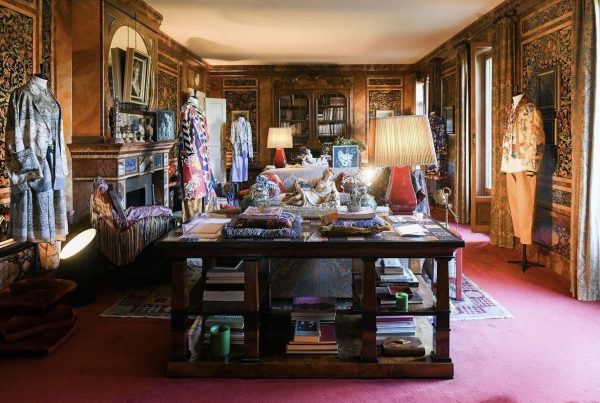Per lo stilista Stéphane Rolland la moda è un sfida: la sfida di vestire le donne lontane dal suo stile, di trasformare un cerchio in un quadrato…Ma la moda è anche un esperienza sensoriale, il modo di esprimere una filosofia di vita.
Com’è la donna di Stéphane Rolland?
È una donna determinata, una via di mezzo tra un’artista e un imprenditore. Mi piacciono le donne che non devono provare nulla oltre al vivere le loro vite, e che hanno la libertà come indole, ma anche un certo rigore. Ovviamente, questo si traduce in un guardaroba minimalista, in qualche modo puro e audace.
L’audacia è una forma di coraggio che ci aiuta ad andare avanti, ad aprire le nostre porte e sviluppare la curiosità per comprendere la vita oltre le proprie frontiere.
Se potesse scegliere una persona, viva o morta, reale o immaginaria per cui creare un capo speciale, chi sarebbe e cosa creerebbe?
È così difficile scegliere una sola persona! Mi piace come le donne mi sorprendono e mi diverte anche vestire quelle donne che sembrano lontane dal mio “DNA”: per me è una sfida piacevole! mi sento estremamente fortunato perché posso contare tra i miei clienti alcune donne assolutamente notevoli, e posso sinceramente dire che soddisfano tutti i miei sogni come stilista.
Cosa le dà più ispirazione nel creare?
Senza ombra di dubbio l’arte e l’architettura in tutte le loro forme.
Oscar Niemeyer in particolare ha svegliato i miei sensi e dato forma al mio sguardo. Proprio come le curve di Ron Arad, o i dipinti di Pablo Palazuelo. Anche la musica
è essenziale per trasportarmi in un’altra dimensione, all’interno della mia
immaginazione.
Le sue creazioni hanno una struttura architettonica, come è capace di trasportare gli aspetti architettonici in un capo e quale opera architettonica vorrebbe “trasformare” in un abito?
Inizio dal principio secondo cui ogni opera architettonica può trasformarsi in un abito. Il mio mantra è la visione ossessiva del cerchio, una linea perfetta ed infinita, in un quadrato; per me è la rappresentazione suprema dell’equilibrio. Attraverso ciò, pongo sempre l’attenzione al movimento che darà vita al capo. Per esempio, la Nike di Samotracia ha ispirato molti dei mei vestiti… osservare il modo in cui il corpo si libra, offrendosi al vuoto del non conosciuto, è una vertigine. C’è una potere incredibile in questa scultura mescolato ad un senso di libertà che ancora oggi mi mette in difficoltà.
Ha recentemente lanciato una linea di kaftano, perché il kaftano?
È associato al homewear, ma in modo elegante e raffinato, io stesso indosso il “taub” quando sono nel Medio Oriente. Comfort, stile, silhouette vantaggiosa e sensualità accresciuta… cosa si può chiedere di più? Oggi le restrizioni hanno fatto in modo che le donne ricevessero a casa più ospiti e più spesso, e il kaftano è l’outfit ideale per questi incontri in casa. Nel 1960 Marella Agnelli ospitava in kaftano, lo stesso faceva Elizabeth Taylor, Marie Hélène de Rothschild, la Viscontessa de Ribes e molte altre icone di stile del periodo.
Cos’è per lei la Couture?
Non la couture, ma la Haute Couture!
L’haute couture è un savoir-faire prezioso, unico, antico; il sacro Graal che esprime una certa filosofia di vita.
Solo le persone che hanno avuto l’opportunità di indossare un outfit creato secondo il proprio gusto, la propria personalità, le loro richieste, possono capire cosa sto cercando di dire. È un’esperienza sensoriale.
Nelle note alla sua collezione Couture Primavera Estate 2021 ha scritto che la collezione è un ritorno al Sigle de Oro spagnolo, perché ha scelto quel periodo?
È stato il periodo a scegliere me! L’intelligenza e modernità dei quadri di Velazquez mi hanno sempre affascinato. E l’adattamento minimalista ed essenziale dei suoi quadri fatto da Manolo Valdés è incredibilmente potente. Amo profondamente la Spagna, il suo passato ed il suo presente, la sua follia ed il suo rigore che si uniscono.
Se non fosse nato negli anni 60, in che periodo avrebbe voluto vivere? Forse il Siglo de Oro?
Sono felice della mia epoca, e preferisco pensarla così… trovo le nuove generazioni bellissime e coraggiose. Culturalmente mi sarebbe piaciuto un ritorno agli anni 20 e 30, o alla fine dei 60. Il design, la moda, una certa eleganza… e avrei potuto avere una conversazione con Cristobal Balenciaga!
For Stéphane Rolland fashion is a challenghe: the challenge of dressing women far from is style, the challenge to transform a circle in a square.
But fashion is a sensorial experience as well and a way to express a philosophy of life.
How Stéphane Rolland’s woman looks like?
She’s a decisive woman, between an artist and an entrepreneur. I love women who have nothing to prove beyond living their lives, and who affirm both a freedom of character and a certain rigor. Of course, that translates into a minimalistic wardrobe, somehow pure and audacious.
Audacity is a form of courage that helps us go forward, to open doors and develop the curiosity to understand life beyond one’s own frontiers.
If you can choose a person, dead or alive, real or imaginary, for which create a special garment, who could has been and what has been?
It’s so hard to pick just one person ! I love how women surprise me, and I also enjoy dressing those who seem far from my “dna:” to me it’s a lovelychallenge! I feel exceptionally lucky to count some absolutely remarkable women in my clients, and I can truly say they fulfil all my designer dreams.
What gives you more inspiration when creating?
Without an ounce of hesitation: art and architecture in all their shape and forms.
Oscar Niemeyer particularly awakened my senses and sharpened my gaze. Just like the curves of Ron Arad, or the paintings of Pablo Palazuelo. Music too… it’s essential to transport me to another dimension within my imagination.
Your creations have an architectural structures, how are you able to
transpose the architectural aspects in a garments and which architectural
masterpiece would you like to “transform” in a dress?
I start from the
principle that any architectural work can be transcribed within the
construction of a dress. My mantra is the obsessive vision of the circle, a
perfect and endless line, in a square; to me it is the representation of
supreme balance. Through this, I always look for the movement that will give
life to the garment. For example, the Victory
of Samothrace has inspired many of my dresses… observe the way the body
soars, offers itself to the unknown emptiness, and it’s vertigo. There is an
incredible power in this masterful work mingled with a sense of freedom that
still troubles me today.
You have
recently launched a Kaftans collection, why Kaftans?
The caftan is associated to Homewear, but in
refinement and elegance. I wear the “taub” myself when I stay in the
Middle East. Comfort, style, advantageous silhouette and heightened sensuality…
what more could you ask for? Today the restrictions have made women receive
guests at home more often, and the caftan is the ideal outfit for these “home
meetings”. In the 1960s, Marella Agnelli hosted in a kaftan, as did Elizabeth
Taylor, Marie Hélène de Rothschild, the Viscountess de Ribes and many other
style icons of the time.
What Couture means for you?
Not just Couture, but Haute Couture!
Haute Couture is a unique, ancestral, precious savoir-faire; the supreme grail which expresses a certain philosophy of life. Only people who have had the opportunity to wear an outfit made according to their taste, their personality, their requirements, can feel what I am trying to explain. It is a sensory experience.
In your Couture SS21 collection notes, you wrote that the collection is a
return to “The Spanish Golden Age”, why you choose that period?
It is that time
period that chose me! The intelligence and modernity of Velazquez’s works have
always fascinated me. And the minimalist and essential adaptation of his
paintings by Manolo Valdés is incredibly powerful. I deeply love Spain, its
past as well as its present, its madness and its rigor which come together.
If you
were not born in the 60s, in which period you would have liked to live? Maybe
the Spanish Golden Age?
I am happy in my time, and I prefer to think that
way… I find the new generation beautiful and courageous. Culturally, a
return to the 20’s and 30’s, or to the end of the 60’s could do us good. Design, fashion, a certain elegance…and I
could have a conversation with Cristobal Balenciaga!






